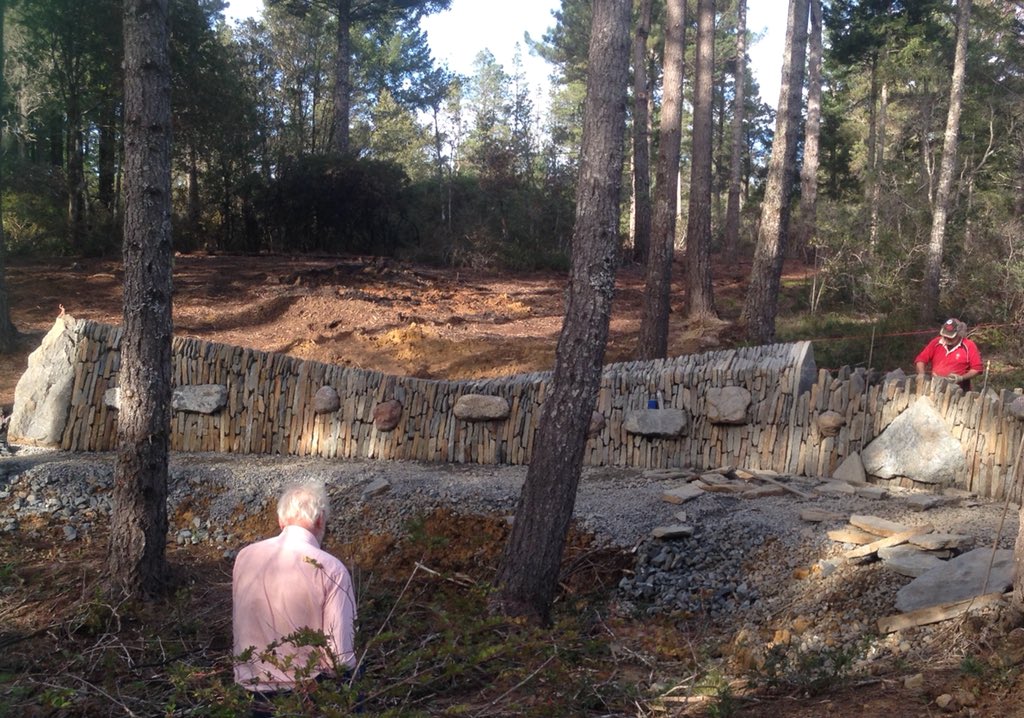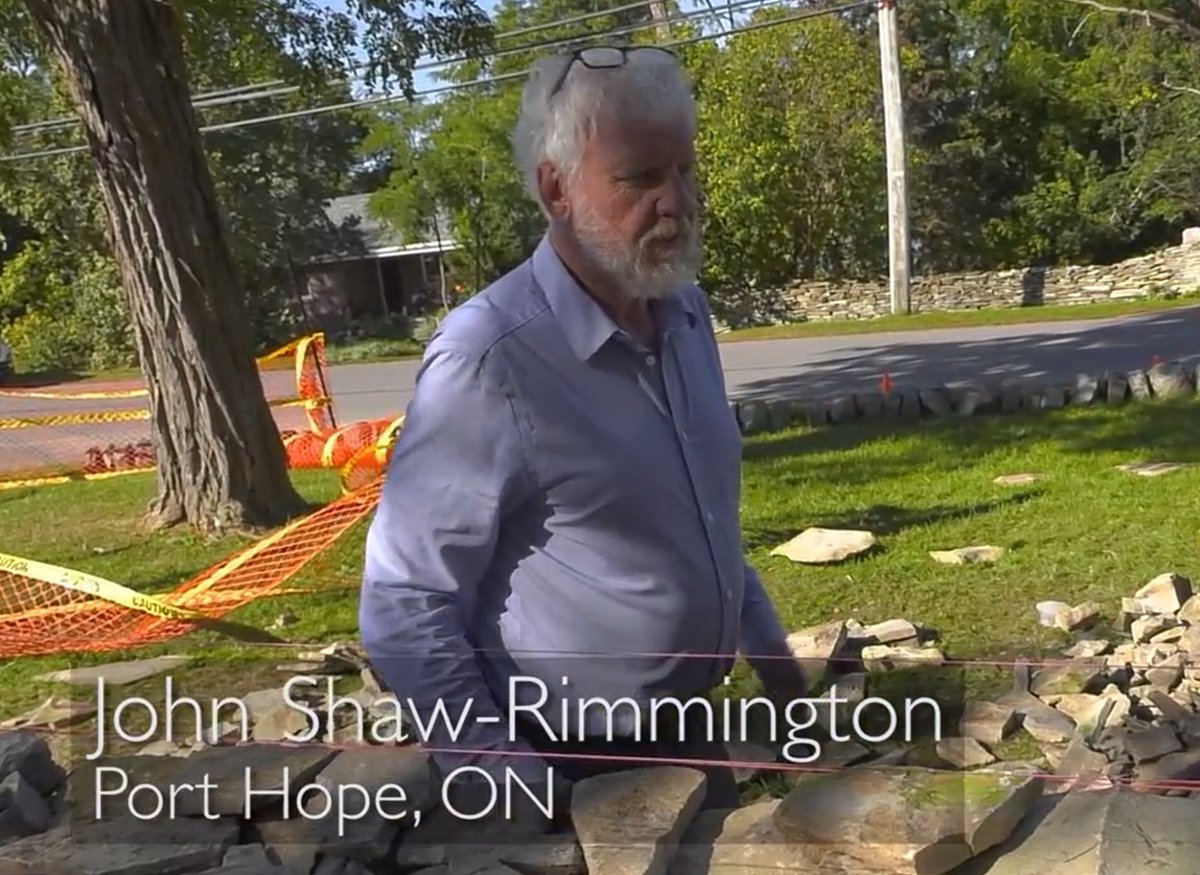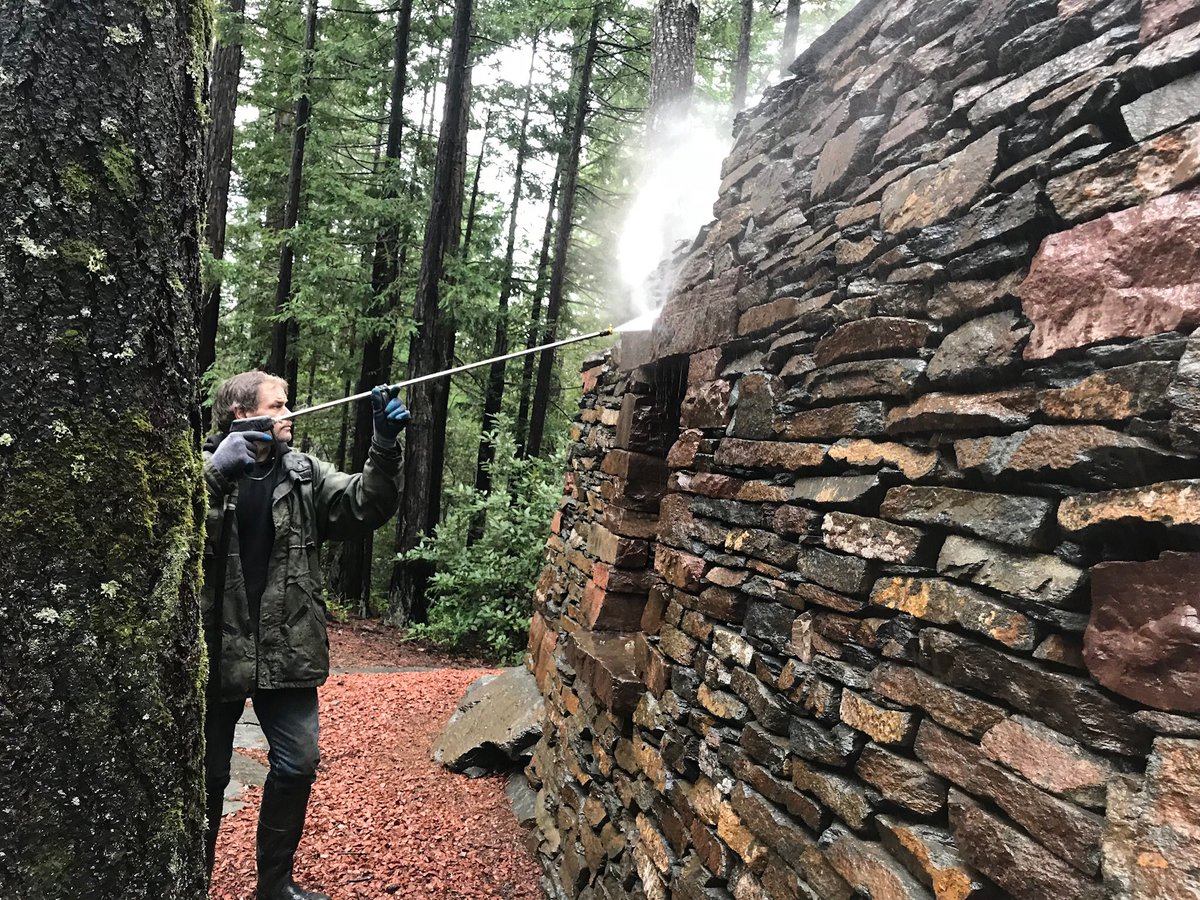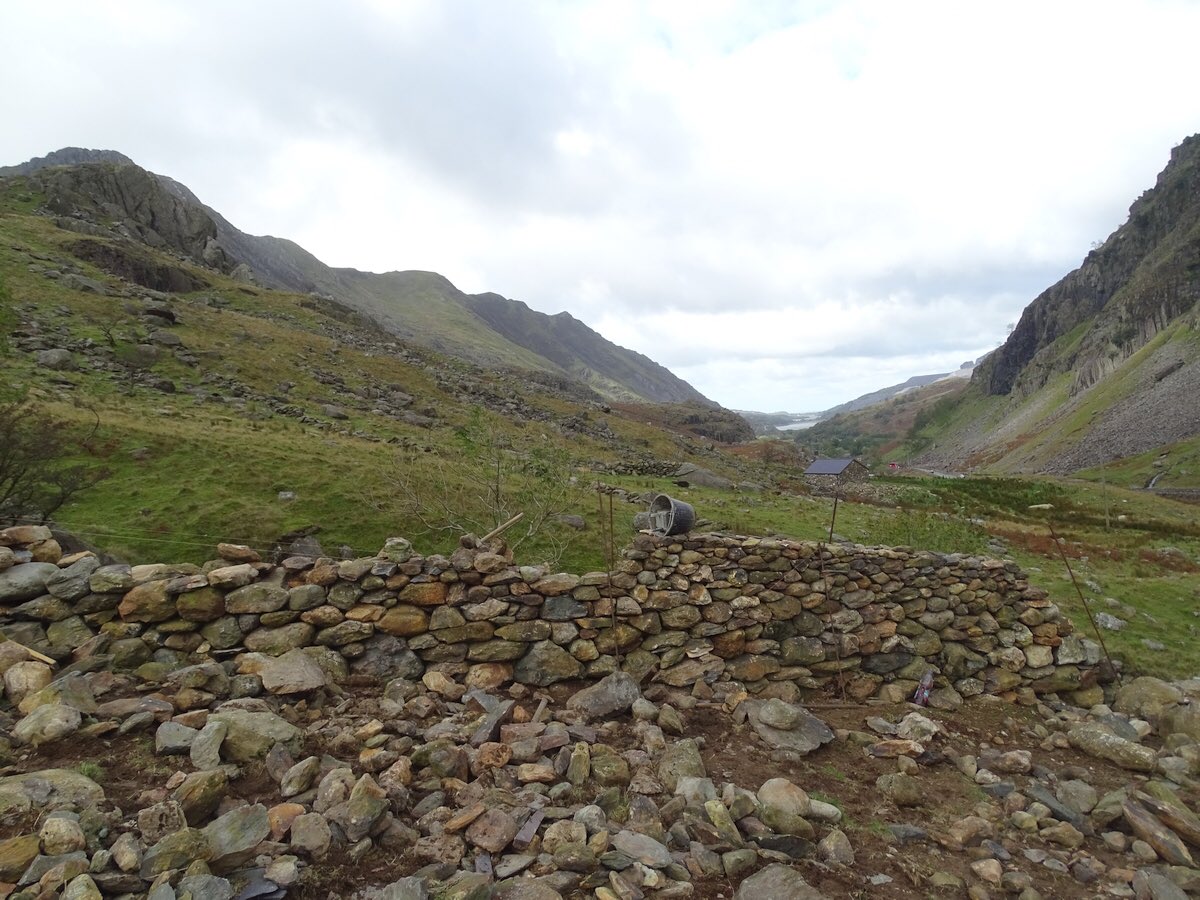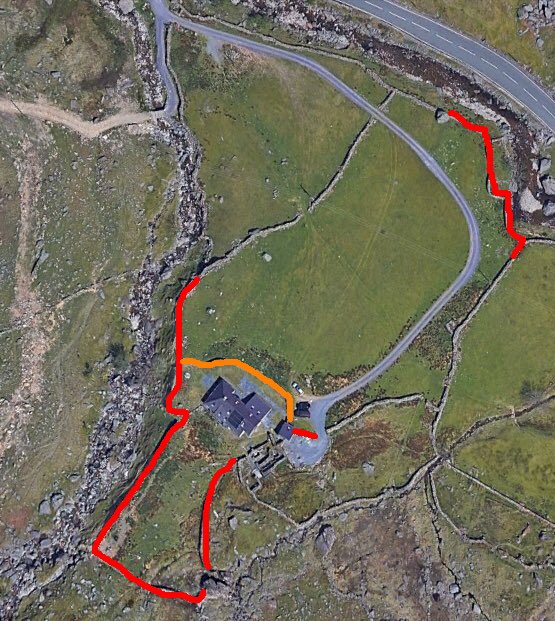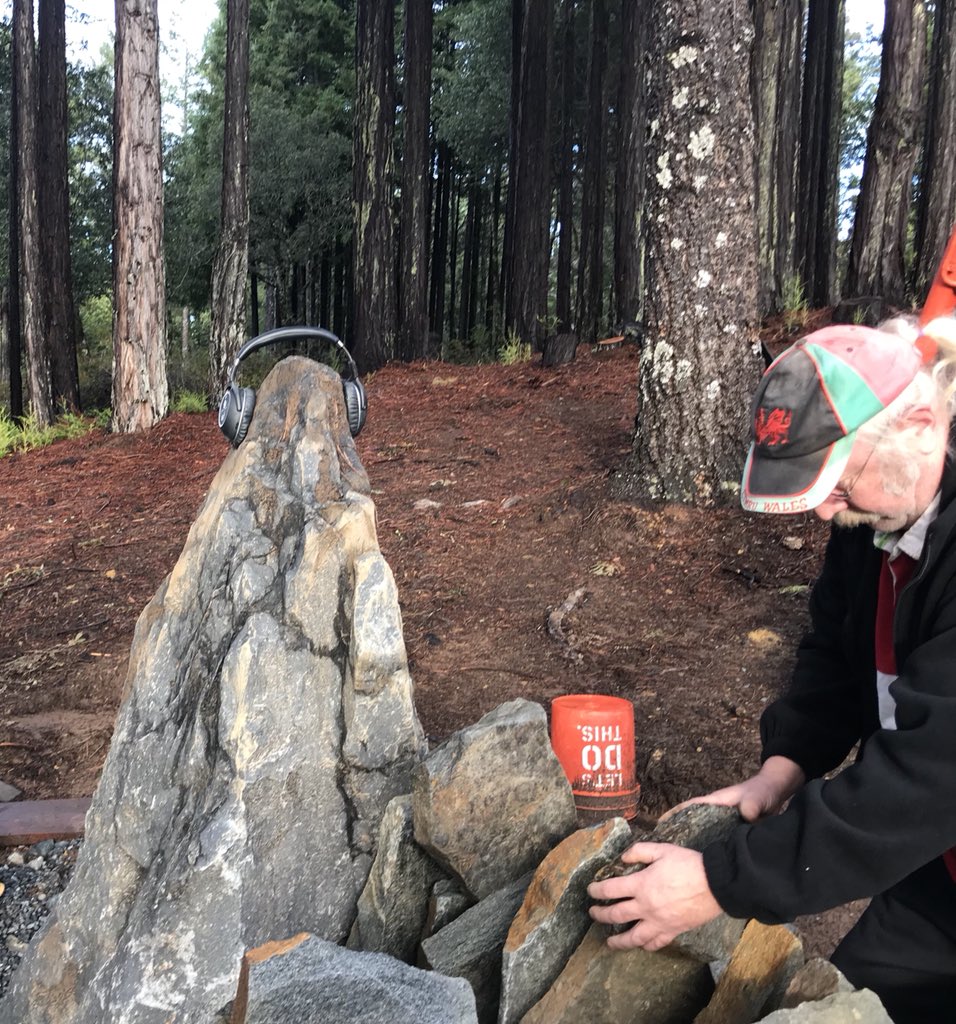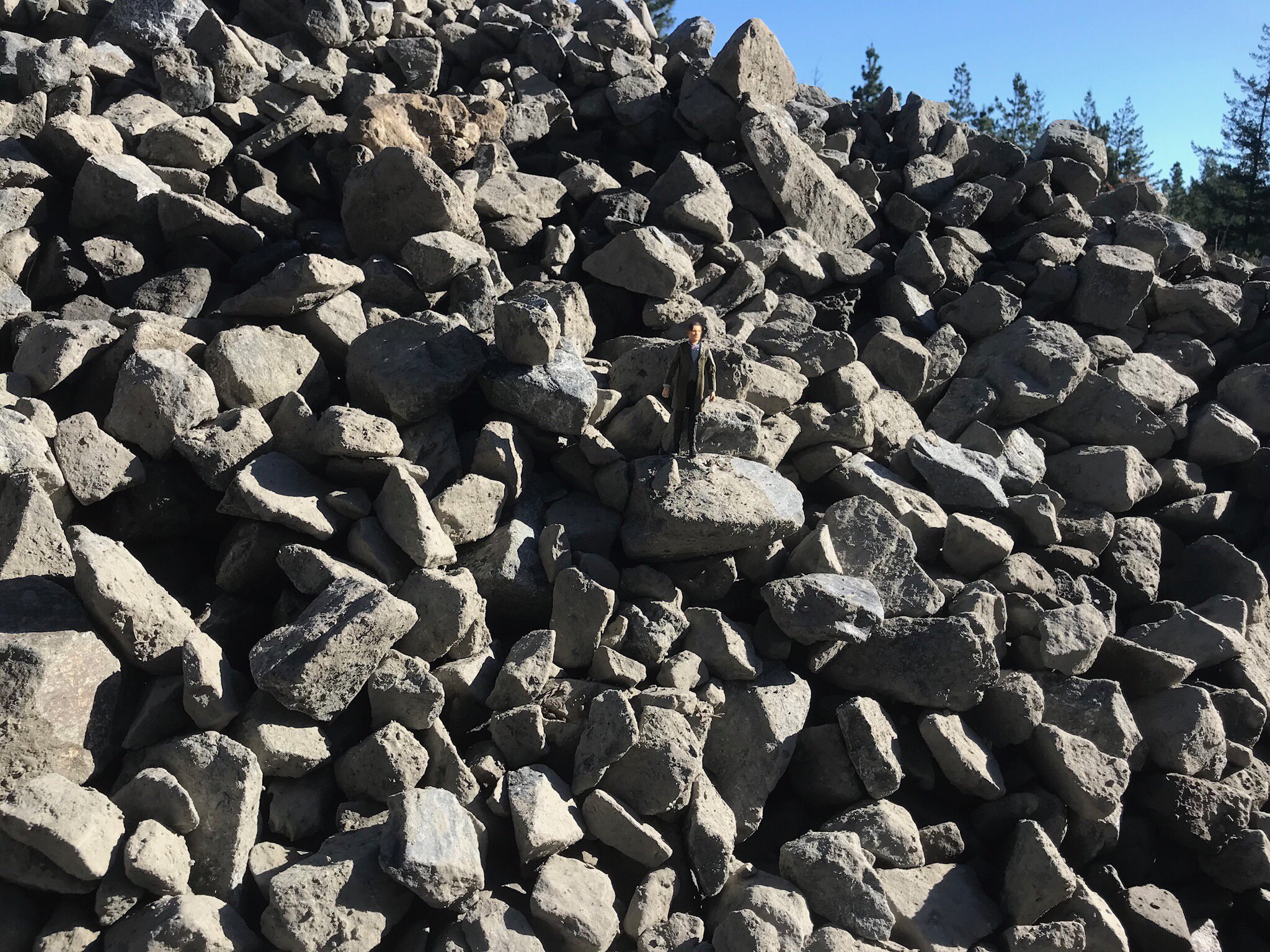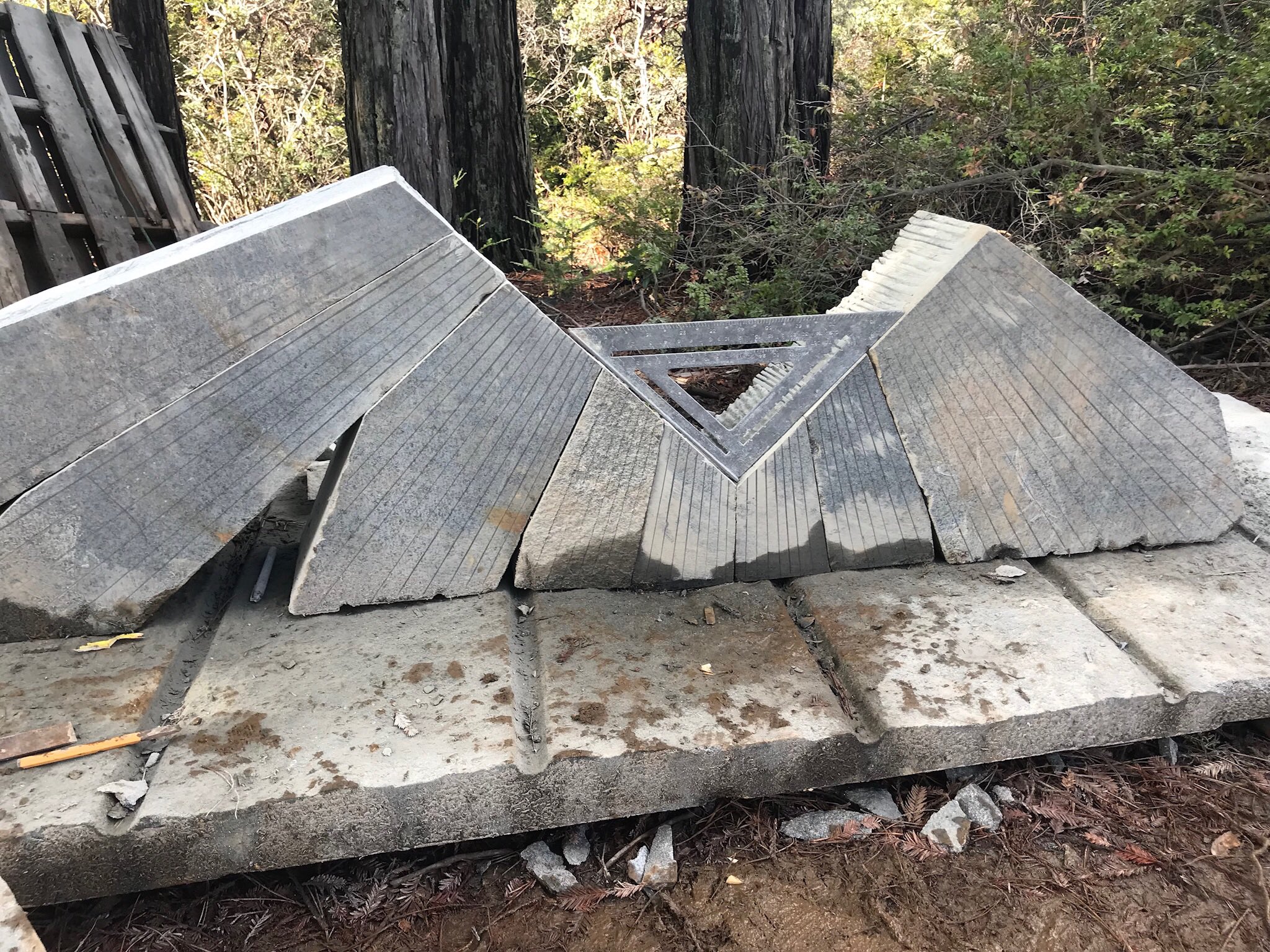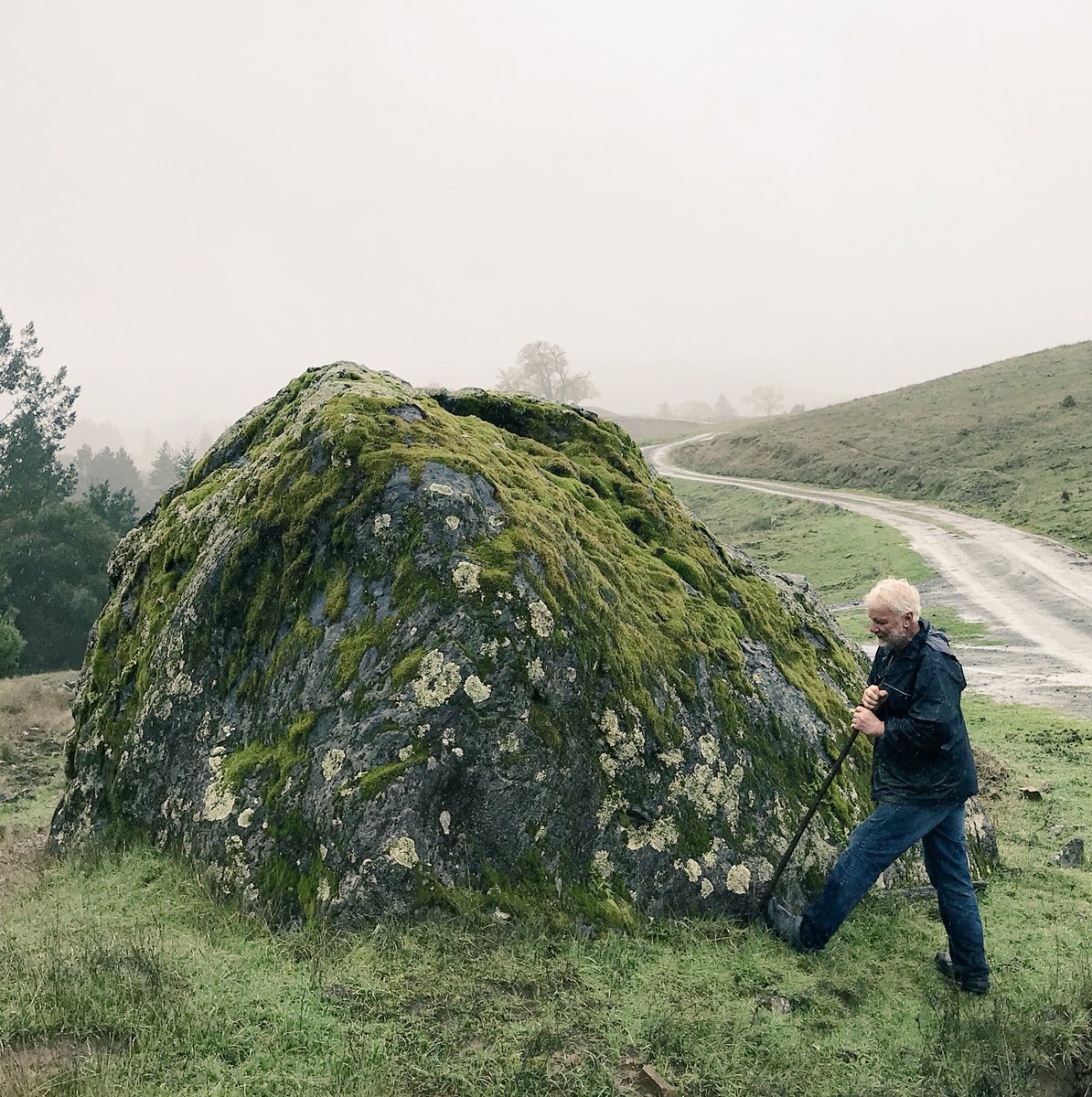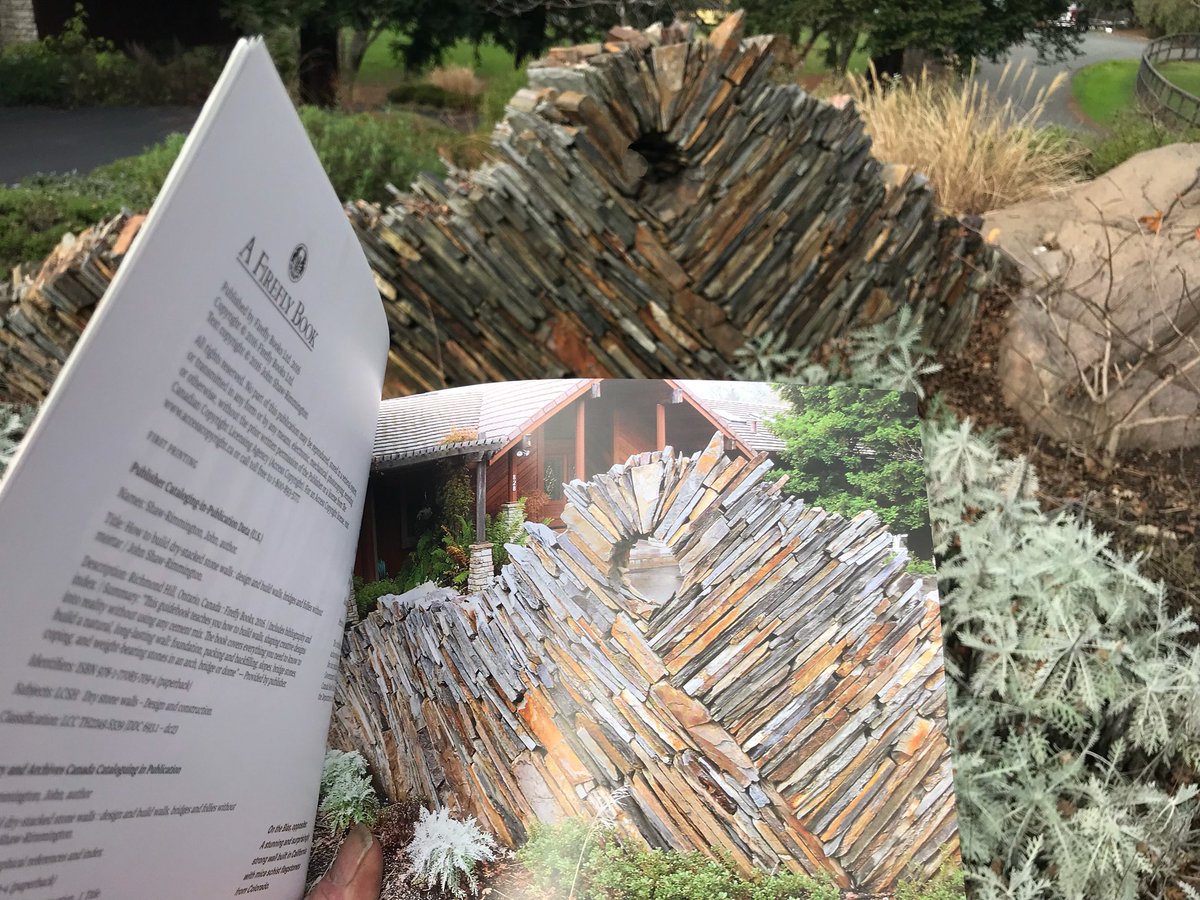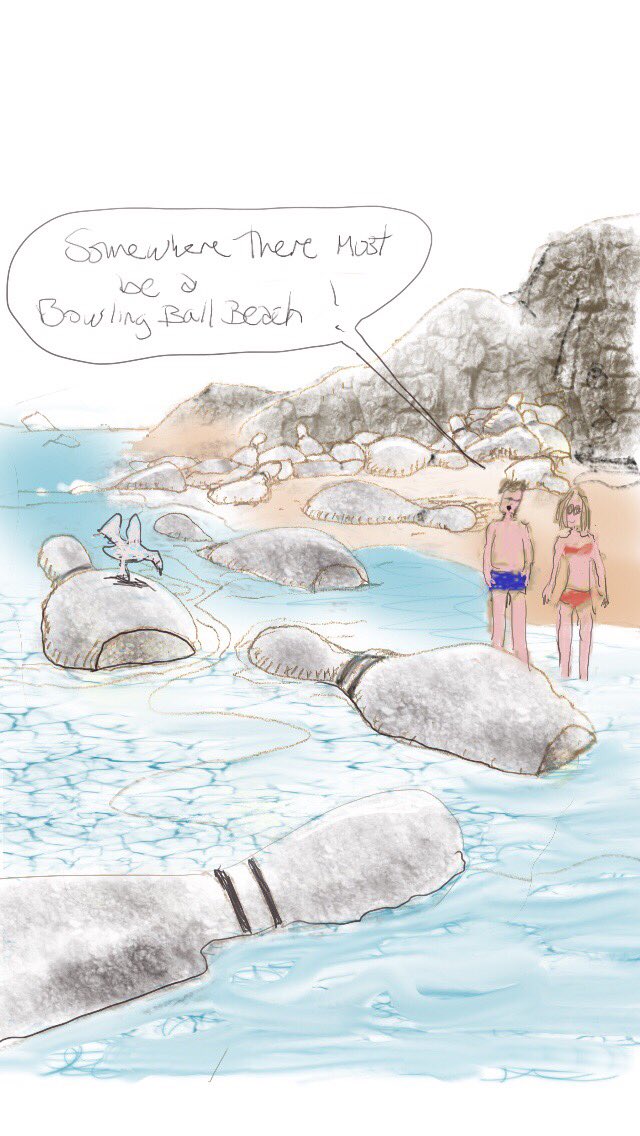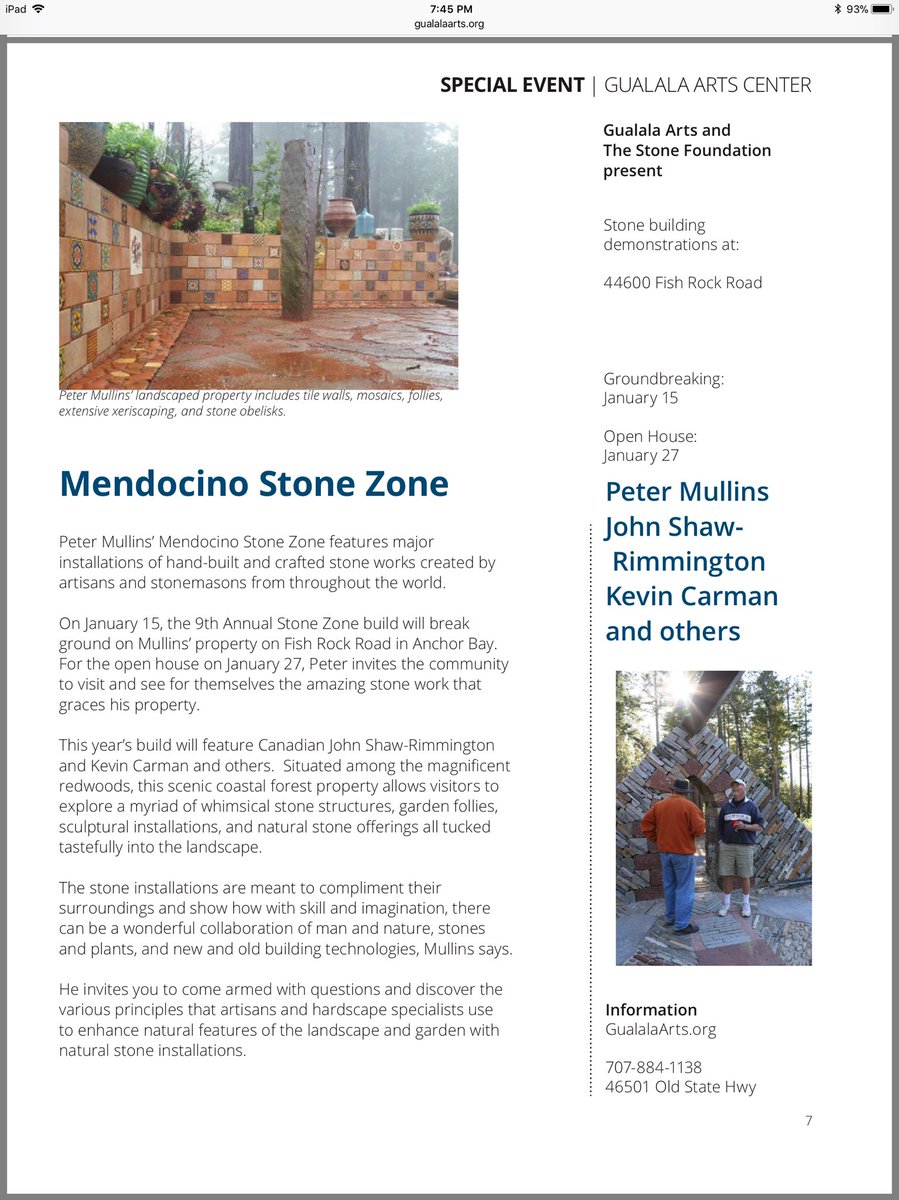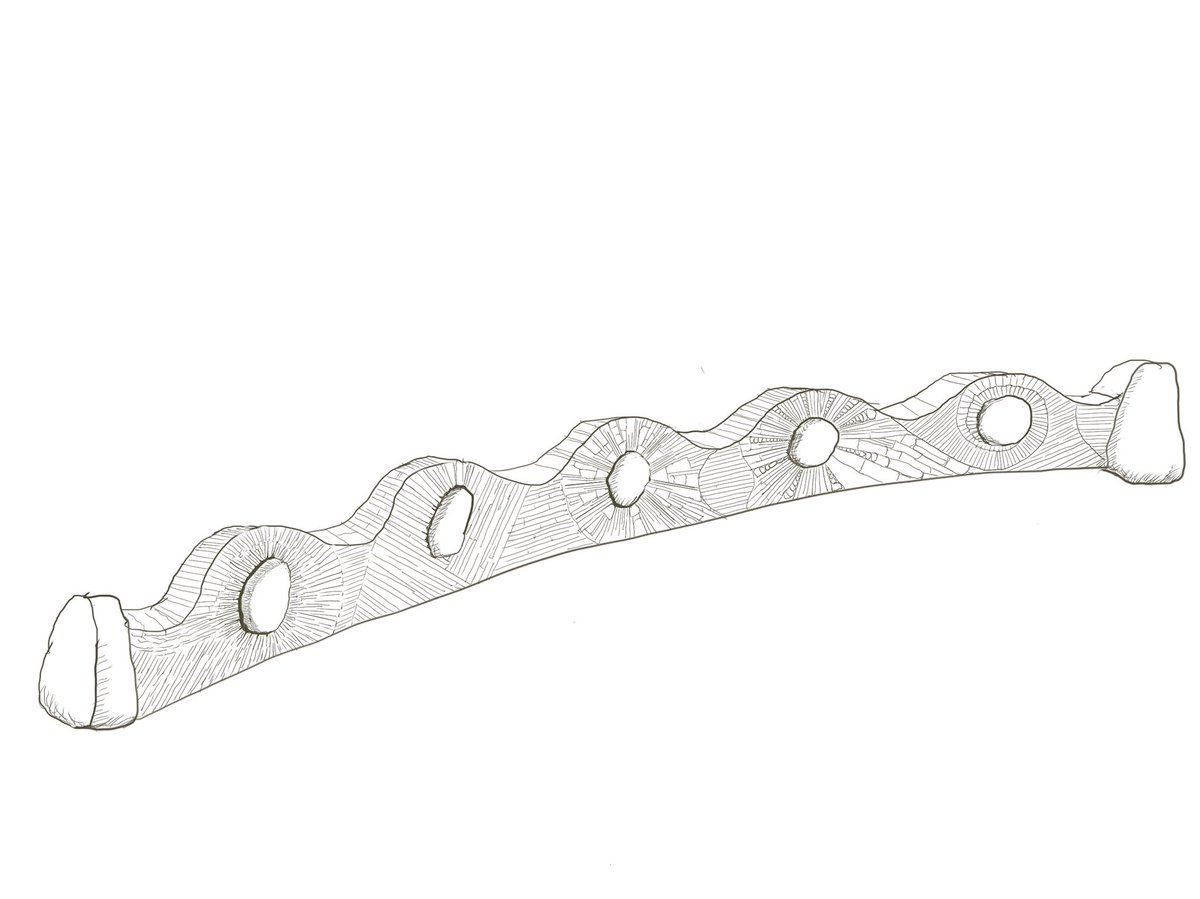Tuesday, January 30, 2018
Monday, January 29, 2018
Sunday, January 28, 2018
Looking back on another amazingly successful festival
Frontenac Heritage Foundation video production of the rebuilding of the historic walls at St Marks church in Barriefield Ontario during the Dry Stone Canada festival last summer.
Friday, January 26, 2018
Thursday, January 25, 2018
Sean Adcock’s continuing walling project back in Wales
Sean Adcock does a lot of field walling where he lives in Wales. He was explaining to me that Blaen y Nant, in the Llanberis Pass, below Snowdon the annual rainfall is 130inches and regularily has 40-50mph winds. The above photo shows where his main worksite has been for some time and the 2nd main propery in terms of amount of work done.
It is private land where he's been restoring many many meters of old field walls that mark property boundary. Most of the walls run along the transition from flatter field to land sloping down to streams. Walls are minimum of 5 feet including coping on low side, downhill side is usually around 6feet, tallest is about 9 feet.
Several good Canadian wallers have gone over there to improve their skills and to learn from Mr Adcock. People like Andre Lemieux, Kenny Davies, Akira Inman and Evan Oxland to name a few have worked on this particular site with Sean over the years ... There is a blog post back in April 29 if2013 . The first photo is Andre on downhill side of section they worked on when he visited and also a photo of him coping.
The google map photo shows what Sean has done at the Blaen y Nant property. The red walls are boundary, the orange wall is just under 5 feet on field side, and is mostly retaining(garden). This years work was the extension of the back garden wall beyond orange wall on the left hand side. The photo at the top of the page was taken about a third of the way along it from orange wall, looking down the valley towards Llanberis. Very Approxmately 40 linear metres and 800 square metres in total between other jobs over last 7 year.
Tuesday, January 23, 2018
Alternative Rock
Our old friend Sean Adcock from Wales has recently arrived in Gualala, joining Mark and I on this our latest very challenging walling project. He says he hates working while we have our music playing, so we’ve had to put our headphones on in order to listen to the stuff both of us like. I don’t know what the boulder is listening to.
Monday, January 22, 2018
Saturday, January 20, 2018
Friday, January 19, 2018
Wednesday, January 17, 2018
Comparing with the book .
It is often quite rewarding to go back and visit projects we’ve done a long time ago. This one was looking well, with all the young plantings ( seen in the photo in my book) now grown in and framing the small portal installation so nicely.
Though he had insisted we. Build the small hole in the wall and very much liked it, the client had told us after it was built he wasn’t expecting the opening to last with the frequency of sizmic activity they had in that part of the state. However the niche piece and all the surrounding walls we built on the property were all very much in tact. Neither the structural integrity of the walls or the colours of the stones had deteriated from what the original photo in HowTo Build Dry Stacked Walls shows .
Monday, January 15, 2018
Saturday, January 13, 2018
Friday, January 12, 2018
Thursday, January 11, 2018
Boulder Wall
How do the little stones escape the pull of the boulders?
There has to be an explosion
But can it be delayed?
Deconstructed?
Like some clever food preparation.
Or
Or
Let the stones be like words
Describing the main thoughts.
The sentence structure alluding to a central theme that ties the boulders together,
Yet each is mysteriously held in space
As if unsupported
Floating
The arrangement of
smaller boat's with their flags (flagstone?) celebrating the arrival of a large ship into the harbour
Not touching.
Excitedly
Circumnavigating.
How many variations can there be ?
Radiant spiral herringbone horizontal vertical
Or what ?
Random?
Never random!
They must have a sense of something?
Symmetry perhaps.
Or order of an unconscious kind
Ramblings But always with a strong sense of meaning.
Nature rambles for a reason.
Man must understand and not just create meaninglessness.
Ironically
Repetition is the clue - And the technique.
Transforming nothingness into something
Beautiful..
Even the
The circle can transition into something other.
And not just the common spiral,
It can tip toe into all kinds of lacy positive/negative spaces.
Where the axis become a doorway
Into another changeless allusion to infinite mass.
The boulders perch united by distance ,
Held together like a tapestry
Of ideas trying
Different approaches to the same question -
What are these stones doing here ?
How are they making a statement?
The artists goal -
How to make them not seem tame or timid or merely set in another clumsy installation
Simply put
What is a bolder wall ?
Wednesday, January 10, 2018
Tuesday, January 9, 2018
Monday, January 8, 2018
A great article in the Yorkshire Post

William Noble has always had one foot in the past.
He comes from a long line of master craftsmen and has spent a lifetime keeping the art of dry stone walling alive.
However, the 73-year-old has recently embarked on a mission to preserve another of the county’s ancient traditions. Along with his son and daughter, Cuthbert and Lydia, who are also dry stone wallers, Mr Noble has recorded an album of Yorkshire folk songs whose roots can be traced back centuries.
He said: “I grew up in the Holme Valley in the 1950s and back then everyone knew the words to a dozen or more traditional tunes. From quite an early age I would go to folk festivals and I learnt so much just by listening to the various musicians and singers.
“Folk music has a story to tell about the landscape and the people who live there. It tells us about our past and over the last few years it occurred to me that some of the songs I first learnt as a child would be unfamiliar to many youngsters now.
“In another few years there might not be anyone to pass the lyrics and music down the generations and that’s when I had the idea of recording them for posterity. Once I had decided that, I knew I wanted Lydia and Cuthbert to be involved.
“Not only are they blessed with lovely voices, but folk singing is about the family and it felt right that the three of us embark on this project together.”
There are a dozen songs on the CD, including Watter Rattle, The Outlandish Night, Boys of Marsden and The Brown Hare at Whitebrook, and Mr Noble hopes that it will prove to people that there is more to Yorkshire’s folk heritage than On Ilkla Moor Baht’At.
He added: “This county is blessed with a rich heritage of traditional music, some of which dates back to the 1600s. The Brown Hare at Whitebrook is probably my favourite – it has a great story and a great tune which is everything a good folk song should be.
“It’s about a group of huntsmen setting off to catch their prey, but they return empty handed. Like the very best folk songs it tells a great story.
“During the 1970s, I would regularly sing at the hunt suppers of the Holme Valley Beagles, but while I might have been born and bred in the countryside I hate the idea of anything being killed. There is something that appeals about the hare getting away for once.”
The CD, Gritstone For Me, which takes its name from one of the tracks, is now available for both sale and download and if his singing career is as successful as his dry stone walling, Mr Noble could well be heading for the big time.
“People look at a dry stone wall and think, ‘that must be easy to do’, but it isn’t. There are certain techniques you can teach people, but to be really good you just have to have an eye for it.
“When I was younger I won lots of competitions for dry stone walling. It is an art form and it is enjoying a bit of a renaissance. When I was first starting out, the bulk of the work was repairing farm walls, but now it’s much more design-led.
“I still keep my hand in, but it’s nice to have passed the mantel over to my son and daughter. Lydia recently won a top award for shelter she built in the shape of a beehive, so I have no doubt the family craft is in safe hands.”
Read more at: https://www.yorkshirepost.co.uk/news/ballads-of-the-dry-stone-wallers-1-8944388
Sunday, January 7, 2018
Obstacles to progress?

I’m reading a new book, Sapiens, right now, by Yuval Norah Harari. In it, he totally questions whether the 'progress' our species has made in the last 10000 years has been in anyway advantageous or constructive or logical, from any sociological or historical perspective. The change from a hunter gather lifestyle to agricultural was the biggest mistake of all time, apparently.
We gave up the pleasant and nutritionally varied and physically beneficial nomadic occupation of searching out food, for a back breaking, toxic and monotonous farm economy and the inevitable explosion of cities and factories, overpopulation and a modern lifestyle full of stressful meaninglessness. Sapiens became the losers, unknowingly outwitted and controlled by a few clever plants – wheat, corn, rice and potatoes.
Here is a paragraph about about wheat's rise to importance and how millions of humans are more or less compelled to eat it to stay alive rather than enjoy a much more diverse variety of edible plants readily available to our species on this planet, before it was domesticated.
'According to the basic evolutionary criteria of survival and reproduction, wheat has become one of the most successful plants in the history of the earth. In areas such as the Great Plains of North America, where not a single wheat stalk grew 10,000 years ago, you can today walk for hundreds upon hundreds of kilometres without encountering any other plant. Worldwide, wheat covers about 2.25 million square kilometres of the globe’s surface, almost ten times the size of Britain. How did this grass turn from insignificant to ubiquitous? '
'Wheat did it by manipulating Homo sapiens to its advantage. This ape had been living a fairly comfortable life hunting and gathering until about 10,000 years ago, but then began to invest more and more effort in cultivating wheat. Within a couple of millennia, humans in many parts of the world were doing little from dawn to dusk other than taking care of wheat plants. It wasn’t easy. Wheat demanded a lot of them. Wheat didn’t like rocks and pebbles, so Sapiens broke their backs clearing fields. Wheat didn’t like sharing its space, water and nutrients with other plants, so men and women laboured long days weeding under the scorching sun. Wheat got sick, so Sapiens had to keep a watch out for worms and blight. Wheat was defenceless against other organisms that liked to eat it, from rabbits to locust swarms, so the farmers had to guard and protect it. Wheat was thirsty, so humans lugged water from springs and streams to water it. Its hunger even impelled Sapiens to collect animal faeces to nourish the ground in which wheat grew. The body of Homo Sapiens had not evolved for such tasks. It was adapted to climbing apple trees and running after gazelles, not to clearing rocks and carrying water buckets. Human spines, knees, necks and arches paid the price.’
So if wheat doesn’t like them, then it stands to reason that farmers are not going to like rocks either.
Reluctantly, and with much cursing I imagine, the huge boulders and rocks were tugged and shoved off to the sides of the hardscrabble fields that needed to be cleared long ago, so that food could be grown on the land.
By contrast, hunting and gathering for stones (from fields, forests, shorelines and rocky outcroppings) for many of us dry stone wallers, is something we usually enjoy.
Saturday, January 6, 2018
Returning to a 'Hunter Gatherer' lifestyle. A true story.

Back when we were on the farm, before I was walling full time, we had cows. I slaved day after day bailing hay stacking it, working 50 acres, planting pasture seed, fixing fences and carrying water and getting feed to them.
Then one particularly gruelling hot day of bailing hay, I wiped my sweaty brow and squinting through the dust and humidity, looked up over at my cows grazing contently, and thought, hay, wait a minute! All you cows do is lounge around watching me while I struggle to make sure you have enough food for the winter.
After ten intense years on the land, it seemed the joy of farming had somehow started to dwindle. I began to focus my attention on a far less agricultural pursuit, that of learning what to do with all the rocks I had in my fields.
Farm equipment and rocks don't go together. They smash up on them and get broken all the time. That's why anyone who farms hates rocks and wants to get rid of them.
But I didn't hate them. I enjoyed collecting rocks and got pleasure out of carefully stacking them in piles around the fields .
I realized that hot August day, dreading having 20 more acres of hay to bring in before it got ruined by the rain forecast for the next day, that I was not cut out to be a farmer.
I didn't know it at the time but I was beginning a personal reverse journey in time, sociologically . In terms of the evolutionary path of the Homo Sapien species, I was about to discover what being a hunter gather was all about. And, I was bailing from ever having to do anymore haying. I had decided to become a dry stone waller.
... to be continued
Friday, January 5, 2018
Thursday, January 4, 2018
Seeing what we are looking at.
Reading How-to books about painting and drawing, they always tell you to paint what you see, not what you know.
So I try, but
It’s hard to turn your mind off and see something, especially something familiar, without turning to formulated techniques and standard approaches as to how to paint things.
But then, we are not looking.
We are imposing our preconceived notions. There is nothing new. At best we are only reinforcing conventional ways of seeing and painting
To really offer artistic insight we have to create outside the box, which starts with appreciating that there IS an outside to the box.
And then we have to risk trusting what we see there.
Rather than rely on accepted depictions, we commit time and effort to discovering less familiar interpretations of the thing we see in front of us.
How does this apply to the world of stone ?
Maybe all it means is not loosing sight of what working in stone is all about.
Technique should be a means to allow others to see what it is that we see in the material and why it is we are passionate about it, not a formula or a mindless fabrication.
It should involve an element of risk, and even desperation, if we are really probing the material’s potential.
If we can use stone as we see it, we won’t let it become standardized.
We won’t create boxy stereotypes, nor will we allow ourselves to become too familiar with it.
We will avoid taking the accepted route as much as possible and explore approaches that make for vitality and creative individuality, appropriate to the wide variety of shapes, textures and sizes this wonderful material comes in.
We have to see before we make.
We have to SEE stone.
And we as professionals, have to be humble enough to not think we 'know' what we see yet.
Wednesday, January 3, 2018
Our Walls
A music video I made showing sample photos taken between 2003-2012 of Irish, English, and Scottish walls, and lots of Canadian ones built by me, my students and members of what was then called Dry Stone Wall Association of Canada, but now is Dry Stone Walling Across Canada.
Words and music by Norman Haddow's friend Tom Ramage
Tuesday, January 2, 2018
Subscribe to:
Posts (Atom)

